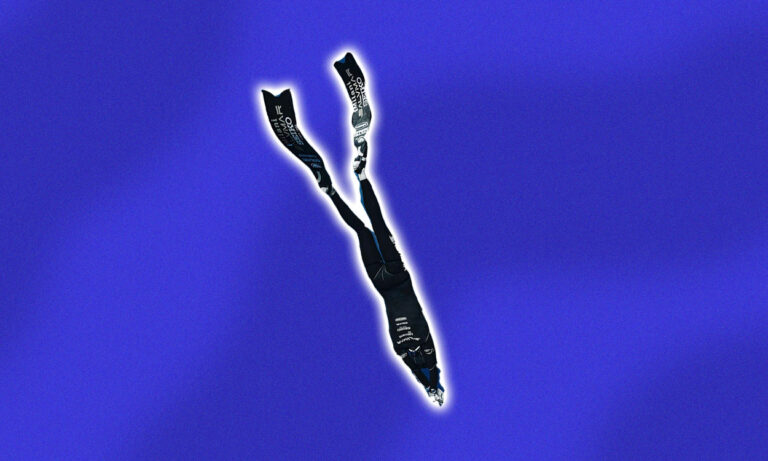Why do people freedive and is the sport as dangerous as it’s made out to be?
I don’t know about you, but I’ve never once considered diving to the bottom of the ocean without any oxygen supplies, you know, just for a giggle. I mean, I’ve never considered diving to the bottom of the ocean ever, to be honest. So, it’s still baffling to me that there are thousands of people out there who regularly hurl their bodies towards the sea floor without so much as a pair of goggles.
Now more than ever, young people are throwing themselves into these kinds of ‘extreme’ sports, and it’s bizarre to me that those of us who operate outside of these sporting communities know so little about them. I’m all for gaining a bit of perspective, so let’s go get some. Is freediving actually as dangerous as it’s made out to be?
I might love the sea, but I have about as much knowledge on freediving as Joe Jonas—I’m more of a tennis girl myself. So, I thought I’d get in touch with a professional to learn more about why on earth people actually do this. But first, the basics.
What is freediving?
Freediving is often referred to as one of the—if not the most—extreme sports in the world. If you’re unfamiliar, it basically consists of an individual diving underwater without the use of any kind of breathing apparatus. In freediving competitions, the rules are pretty simple, whoever dives deeper, wins. Okay, when I say simple, that might be a slight exaggeration.
Is freediving dangerous?
Freediving is incredibly dangerous. Some of the risks include: dehydration and decompression sickness, sunstroke, hypothermia, lung collapse, and blackouts. Now, a blackout is one of the most serious things that can happen to a freediver. During a deep breath-hold, oxygen levels can drop to a fatal level leading to a loss of consciousness. If they don’t receive immediate medical attention, it can be lethal.
Of course, if we look at the statistics, the situation isn’t as dire. According to sources, there has only been one recorded death in over 80,000 competitive freedives held globally.
SCREENSHOT spoke to Carlos Diezel, manager of Dahab freedivers, one of the most renowned freediving centres in the world. The Brazilian professional moved to Dahab with his family in 2018 to learn as much as possible about his passion. He quickly rose through the ranks and is now one of the centre’s most experienced trainers.
I wanted to find out more about what attracts people to the sport, and indeed why so many people choose to take part in an activity that could easily take their life. Diezel provided some really key insight.
What do you think is the most attractive thing about freediving?
“There are so many different reasons I could mention. But I think these are the main ones: getting access to the underwater world without depending on complex, heavy and expensive gear from scuba diving, having a stronger connection with the sea and the oceans, and the possibility of being able to move comfortably in three-dimensional space while being weightless and free from bulky gear. There’s also the incredible mental state reached in freediving with some level of confidence which is described by many as the deepest meditative state one ever got, even those experienced with advanced meditation practices.”
Have the safety concerns associated with freediving ever put you off the sport?
“No, for a simple reason: the sport can be very safe with quite simple safety rules. We always follow these rules strictly and that’s what makes us confident to go deeper and further.”
Who are some of the youngest freedivers you’ve ever personally worked with?
“There are freedivers starting in childhood. Just to mention an example, my son is 11, my daughter is 13, and they both freedive regularly with me and also with some of our adult freediver friends. Of course, we watch out for safety in a specific way, taking into account that kids and teenagers have a different approach to risk. But setting basic limits for maximum depths and making sure that they don’t progress without solid foundation still gives us a lot of room to play and enjoy freediving in different aspects, excluding in these earlier ages only the competitive aspect.”
What is your favourite thing about freediving?
“For me, it’s the possibility of intimate connection with the sea, the water element and the underwater world, while at the same time, discovering a lot about myself. Freediving teaches me more about myself than any other activity I ever did. The fact that you can only go deeper if you are absolutely comfortable allows us to face our subconscious in a very clear way. And all this happens almost always connected with beautiful sensations and experiences.”
One final thing I wanted to ask Diezel were his thoughts on the recent Netflix documentary The Deepest Breath: a feature-length film which looked at the lives of international freediver Alessia Zecchini and professional safety diver Stephen Keenan. The documentary follows both of their separate journeys to one another, their experiences as working partners and eventually as a romantic couple. It also documents the tragedy of Keenan’s death during a freedive in 2017. The footage is incredibly emotional, particularly when you learn that Keenan died saving Zecchini’s life.
Considering the fact that Diezel trains and works in Dahab, the very location where Keenan tragically lost his life, I was curious to find out if the expert had any thoughts on the documentary and whether or not he felt that there were any misconceptions about freediving in the mainstream media. This is what he had to say:
“There is definitely a big misconception about freedivers in the mainstream media. Freediving is often presented as an extremely dangerous sport, just because these aspects attract more clicks and views. But this is very unfair to the sport, given that the statistics show a very small number of serious accidents.”
“As a reference, to date, there was one single fatality in official freediving competitions, which have started in 1993. Even football has a much worse record in this statistic, with more than 115 death cases of players since 1993 (counting only those directly connected to incidents happening in an official match). But these rather positive stats from freediving are totally ignored in the mainstream media when they talk about the sport. Another example are reports talking about freedive sites like the Blue Hole, here in Dahab. They often mention the high number of fatalities that have happened here, but they don’t mention that these fatalities were almost all related to scuba divers, except for one single death related to freediving, which was Steve [Keenan]’s.”
“Talking about The Deepest Breath specifically, sometimes the promotion of the documentary fell into this same misconception. For example, the trailer started with the sentence ‘Freediving is one of the deadliest extreme sports,’ but the movie itself was actually good, in my opinion. Even though risk, blackouts and even death are quite present in the documentary, it’s, in this case, something necessary because the central history has ended with a fatal accident, so it’s unavoidable to show this risk aspect of the sport when it comes to the top level performances.”
“This history had to be told, not only because it was an extremely heroic act from Steve, but also because it’s a really beautiful history, showing the passion that professional freedivers share for freediving and life, showing the strong, connected community we have—and also showing the beauty of the sport itself.”






